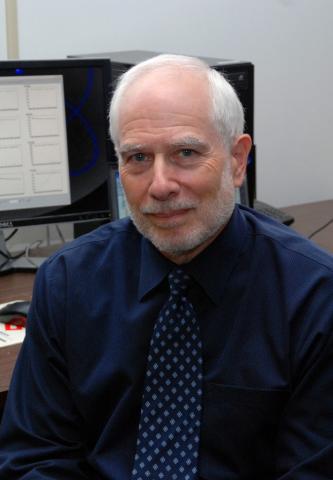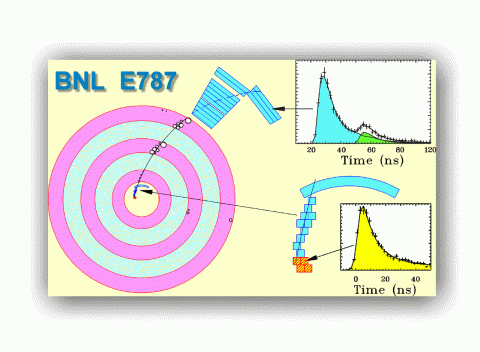

Doug Bryman (UBC and TRIUMF), Laurie Littenberg (Brookhaven National Laboratory), and Stew Smith (Princeton University) have been awarded the American Physical Society's W.K.H. Panofsky Prize in Experimental Particle Physics for 2011 to recognize and encourage outstanding achievements in experimental particle physics. A prestigious prize in the North American community, the Panofsky Prize cites the joint work of the trio on Experiment 787 at Brookhaven National Laboratory, a project analyzing "billions and billions" of particle decays looking for a needle in a haystack: an unusual decay pattern of a kaon particle involving 2 neutrinos.
The citation reads, "For leadership in the measurement of kaon decay properties and in particular for the discovery and measurement of K+→π+ν ν." The physicists were cited for discovering and measuring a very rare decay of a positively charged subatomic particle called a kaon, or K meson — a feat reported in 1997 by a team of 50 collaborators from around the world after ten years of searching through the remains of the decays of 1.5 trillion particles. At an experiment called E787 at Brookhaven's proton accelerator, the Alternating Gradient Synchrotron (AGS), the scientists discovered the rare mode in which a K meson decays to a pi meson and a neutrino-antineutrino pair (see figure to the right) — a process with a probability of about one in ten billion. Finding this rare kaon decay sheds new light on the universe's most elemental forces and most basic building blocks, as explained by the theory of subatomic particles known as the Standard Model. The decay probability depends in detail on the presence of heavier particles in the model; the measured rate of occurence is compatible with predictions, indicating that the Standard Model has passed another sensitive internal consistency check.
When subatomic particles decay, they usually break down into more stable, predictable particles. Most often, the K meson decays either to a muon and a neutrino or to two pi mesons, one positively charged and one neutral. Finding the very rare decay was possible because the AGS had state-of-the-art equipment capable of examining one million decays per second, but it was a difficult task for the physicists. Bryman was responsible for the high resolution measurement of the pi+ momentum, most of the beam tracking and beam particle identification, and key parts of the electronics, data acquisition, and photon veto.
Observing this one in ten billion kaon decay remains a monumental achievement, opening a unique window to new physics," commented Robert McPherson, IPP Scientist and Professor at the University of Victoria and Canadian Principal Investigator for the ATLAS/LHC Collaboration in Canada. McPherson performed his doctoral research on E787. "But something else unique about E787 was the opportunity for graduate students to built cutting-edge detectors and then use them to perform a leading physics analysis producing seminal results like the observation of this rare decay. That's difficult to manage in today's large collaborations, and the experience I gained in all aspects of experimental particle physics in E787 laid the foundation for future success," he said.
Douglas Bryman is the J.B. Warren Professor in the Physics Department of the University of British Columbia. Bryman received his B.Sc . from Syracuse University (1966) and a Ph. D. from Virginia Polytechnic Institute and State University (1972). He was a Research Fellow and Senior Research Scientist at TRIUMF from 1972-1999, and Program Director for Medium Energy Physics at the National Science Foundation (1978-79). Bryman's research has focused on flavor physics through the study of rare decays of muons, pions, and kaons and he has been a spokesman for several related experiments at TRIUMF and Brookhaven National Laboratory. He has also been involved in detector instrumentation development for high energy physics and applied physics, for which he has received several patents. His current research involves measurements of rare pion decays, positron emission tomography, and cosmic ray muon geo-tomography.
Announced in late 2010, the 2011 Panofsky Prize was formally conferred at a special ceremony as part of the May 2011 annual meeting of the Amercian Physical Society. TRIUMF's current director Nigel S. Lockyer won the Panofsky Prize in 2006.
Congratulations, Doug!
-- by T.I. Meyer, Head, Strategic Planning and Communications
